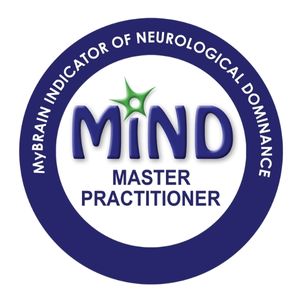Why is effective communication important?
According to a study of 400 UK & US organisations, lack of communication costs the average organization $62.4 million per annum in lost productivity, according to Instagantt.
Research mentioned by Pumble also shows that 86% of employees and managers agree poor communication is the leading cause of workplace failure.
These statistics are shocking, and show that good communication is more than a soft skill, it’s a human skill which brings great benefits when we get it right. In a world where we rarely meet face to face, what does good communication look like and how do we achieve it?
Jump to section
Benefits of effective communication in the workplace
When communication flows, then team collaboration is increased. People feel like they are clear on what needs to happen, they understand each other, and trust that they can add their views, and feel heard. The team is more connected and know how to work through difficult conversations and challenging situations to get the projects back on track. Individuals experience higher levels of satisfaction from the work, their role in the team, and working inside the business, and workplace culture feels positive and healthy, as ProofHub shares. Effective communication delivers individual and team performance, and ultimately business results growth.
What are the barriers to effective communication?
What gets in the way is often a misunderstanding of others’ intentions, because you do not get what motivates them, the drivers behind their behaviour and communication approach. You may make assumptions and judgments based on your expectations of what ‘professional’ communication looks like. However, in reality, communication is culturally driven, and you may know the content of the communication, but not the context or the real intentions.
In addition, many people tend to stick with what is familiar to them in their ways of interacting with others. You may not consider how you should adapt your communication approach to the people you are working with to achieve a better connection and relationship, which will allow results to flow.
What is good communication?
We can look at communication from a number of different angles to help us build up a picture of what effective communication looks like.
Are communication challenges slowing down your team delivery?

Improve your team’s communication skills for increased team collaboration and performance with communication training and individual coaching.

The different types of communication
- Verbal communication: what you say, your content and messages with the key pieces of information you want to convey. It also includes elements such as your tone of voice. Do you know how to speak up clearly and get to the point, when it matters? Are the people in your meetings and presentations receiving the message? Can you create engaging communication which people listen to?
- Non-verbal communication: how we say it, including your body language, facial expressions, what you wear, how you sit or stand. People often mention that crossing your arms is a negative non-verbal behaviour and shows you are closed and disagreeing, however this depends on the context and the cultural background of the person. It can be helpful to observe others, as well as be aware of your own non-verbal communication. Is their non-verbal communication aligned or out of line with what they are saying? This can give you clues about real feelings and intentions.
- Written communication: people usually are more aware of improving spoken communication skills, and in the age of quick messaging and short emails, written skills can feel less important. However, when it matters, do you know how to write a formal, professional email which is clear and concise, and yet connects with the recipient? Do you know how tone of voice can come across in your emails?
- Listening: we sometimes forget that communication is a 2-way process- there is speaking and there is listening. We need active listening if we want to communicate effectively. People sometimes mention what’s important is maintaining eye contact to demonstrate listening, and that may be true in some cultures, however be aware that too strong eye contact can be seen as aggressive and confrontational in others. Build your cultural intelligence capabilities to understand the people you are working with. Being curious is also a key part of listening- ask questions, understand others’ issues and objectives, as Forbes shares.
Context shapes the communication approach
We shape our communication based on the context, and this can adapt whether it’s 121 conversations, a group meeting, or a presentation, plus how informal or formal it is.
Other important factors include whether the communication will happen virtually, face to face or in hybrid mode, with each having different communication approaches which make them more effective.
Finally, we can consider the channel, for example, if the communication is happening live with others, or asynchronously via team planning channels, like Teams, Trello or Slack.
Planning your communication
Whatever the context, when it matters you should get clear on the communication approach. To help you with that, I share here my planning questions to use when approaching any meeting or presentation.
- Why? What’s the purpose of this communication? Why is it important? Why should they listen?
- Who? Who will be in the ‘room’? What interests them? What is their cultural context and how could that shape how you approach your communication and interaction?
- What’s the ‘One Thing’? What is your key message? What is the main point on the last slide?
- So what? Why is this important to them? Why should they care?
- Now what? What are the next steps or actions? What do you need them to do in reaction?
Cultural intelligence & Communication agility
We all have the ability to improve communication, for the benefit of ourselves as individuals, for our team members and our business. Effective communication skills help team collaboration and my strong belief is that what matters are 2 key elements: communication agility and cultural intelligence.
Cultural intelligence is the capability to function and relate effectively in culturally diverse situations, according to the Cultural Intelligence Center. This approach and the associated framework helps you to build up your capabilities to make the difference between success and failure in culturally diverse situations, working across borders and at home.
Communication agility is the flexibility to know how to adapt your verbal, nonverbal and written communication to your global team members and contacts. It’s about knowing what elements to flex to be more successful in landing your key messages, how to observe what works and react in the moment. It’s also about building your confidence to speak, even when you don’t always feel in your comfort zone.
The combination of cultural intelligence and communication agility can help us all become more effective in our communication.
How can Culture Cuppa improve your team’s communication skills
We offer both individual coaching programmes and team training workshops to develop effective communication skills that can help build team relationships, performance and deliver business results.
Discover our team communication training
Explore our individual coaching programme, 9 steps to Communication Confidence





